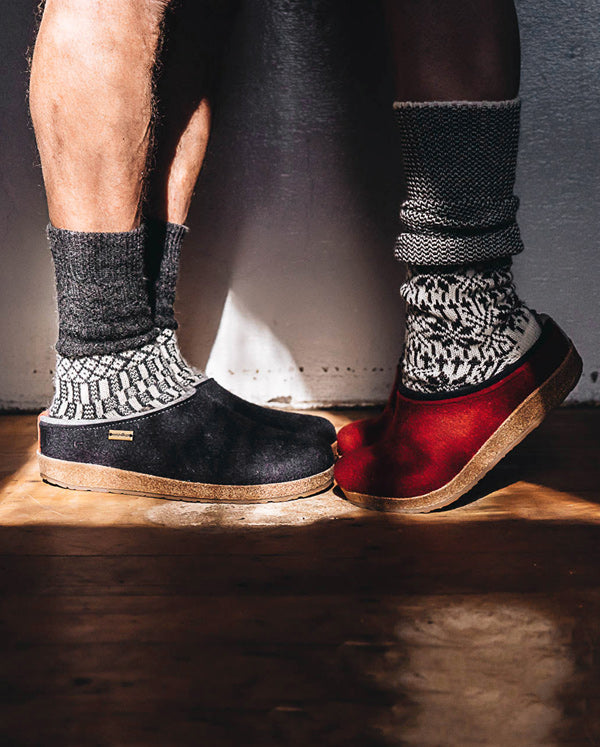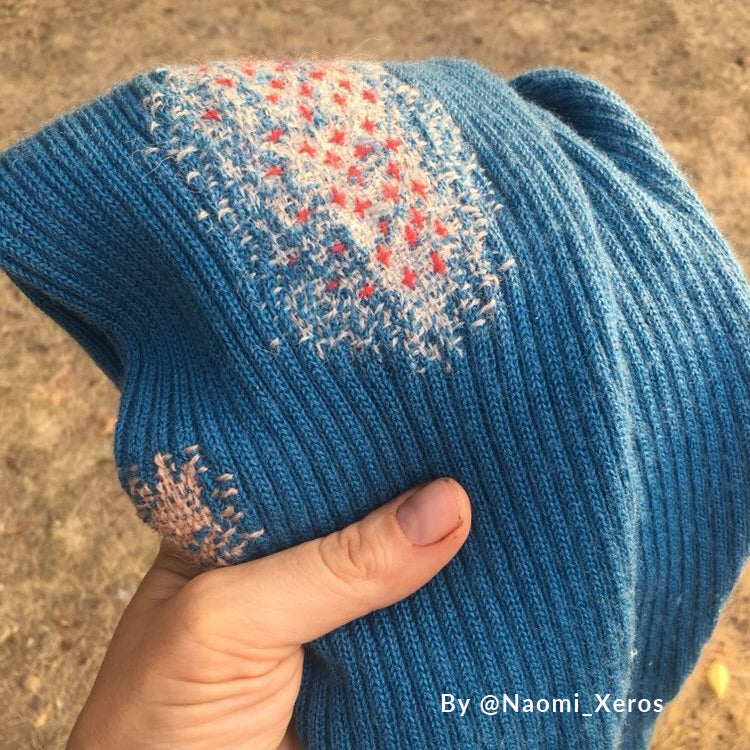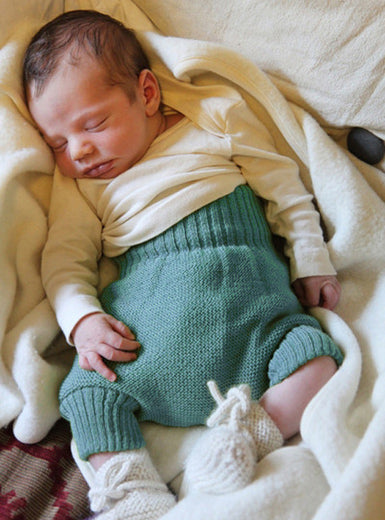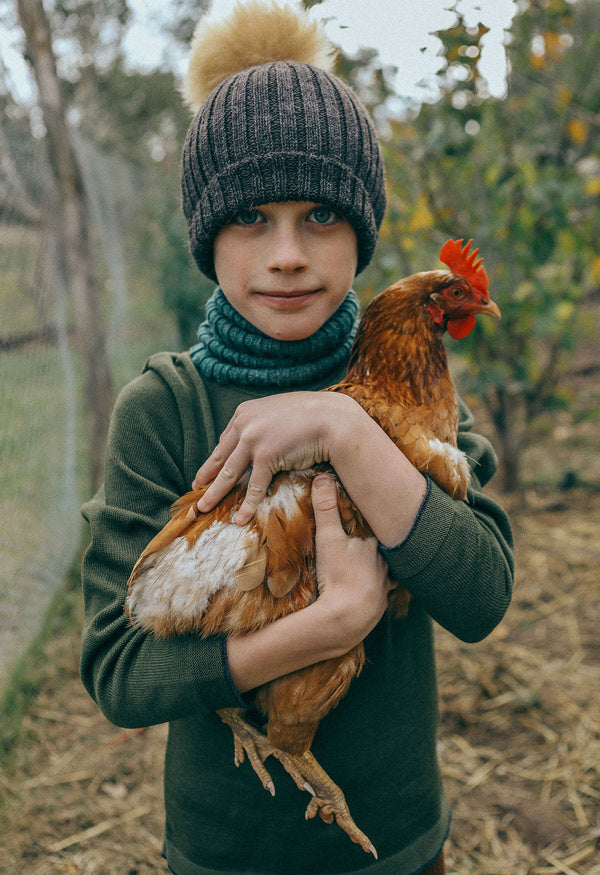Your Cart is Empty
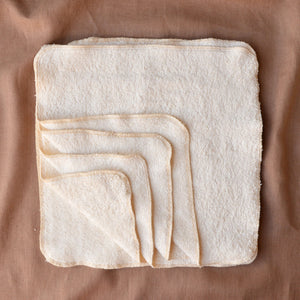
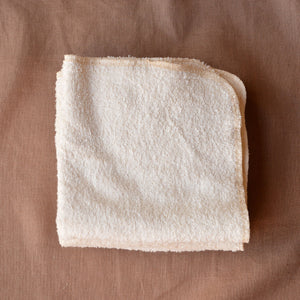
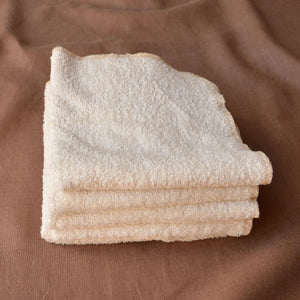
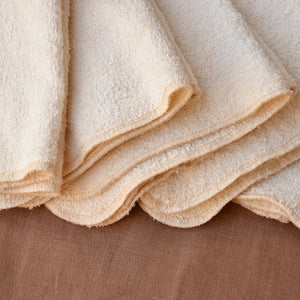
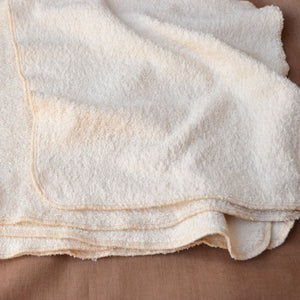
Super Nappy Liners - Hemp/Organic Cotton Terry (5 pack)
$46.95
*New! Terry towelling hemp/organic cotton liner made in-house by Woollykins to replace the out-of-production Disana brushed cotton liners.
Large 38x38cm cloth nappy liners in a fluffy blend of hemp and organic cotton terry towelling. Made in our Castlemaine studio while Disana's much-loved brushed cotton liners are unavailable until further notice due to production issues. Just like Disana's liners, this liner is folded into a pad and used as an absorbent liner/booster for Disana's knitted nappies - or any other cloth nappy for that matter!
The hemp/cotton terry towelling cloth is not only soft and fluffy, but the terry structure also multiplies the fibre's surface area, meaning it can absorb even more moisture.
These terry liners can also be used as a bib, burp cloth, face cloth, household cleaning cloth, and lots more...
Made in our Castlemaine studio along with our brushed organic cotton/hemp liners.
Size: Pack of 5 liners (38 cm x 38 cm each)
Fabric structure:40% hemp and 60% organic cotton (415gsm). Thread 100% cotton.
Origin of fibre and fabric: Ethically grown/produced in China
Country of manufacture: Made by Woollykins in Castlemaine, Australia
Certifications: OEKO-TEX® certified organic cotton
Dyes: None
100% Biodegradable: Yes
Machine Washable: Yes
*Fold one end down 2 inches and then fold the nappy into thirds to make a pad with a thicker pad at one end. For boys the thicker part goes at the front and girls it goes at the back*
About the Hemp/Cotton fabric production and sourcing:
The hemp/organic cotton fabric is sourced via Hemp Gallery, a trusted source of ecological hemp fabrics with the owner Beatrice having grown hemp commercially herself and is very passionate about the environmental benefits of hemp farming worldwide. As environmentalists, one of the main reasons they grew hemp under licence in NSW was that it did not need toxic pesticides, herbicides nor insecticides. It's the same with all Asian countries who have been growing hemp for generations. The fibres are so tough that bugs and pests don't like it and expensive inputs like pesticides are unnecessary. Hemp plants grow very quickly and tall (3.5 to 4.5 months from planting to harvest) suffocating weeds as they don't get sunlight - negating the need for pesticides. Whereas cotton is soft and takes much longer to grow with intense amounts of water (flood irrigation) - hence why it is particularly important to seek out organically certified cotton. There is not the similar need to certify hemp fabric due to its natural resistance to pests, fungus and disease.
Today the vast majority of hemp fibre production comes from China after the farms/mills around the globe suffered from closures due to the fears and regulations around cannabis and major lobbying of the BIG CHEM companies pushing for oil based textiles.
The hemp fabric we use for the production of our nappy liners is grown, milled and manufactured in Qingdao, China. Hemp Gallery has visited the hemp mills in Asia where they process the bast fibres. Hemp is the only fibre that's processed mechanically in that mill. Farmers leave the cut hemp plants on the field (retting) for up to 2 weeks - the morning dew helps to soften the fibres, it is then taken to a yard where the fibres get thrashed and huge logs crush the stems to separate the fibres from the core, then it's combed over and over on powered cylindrical combs, starting with large teeth, and getting smaller and smaller into fine fibre before it goes to be steamed and spun.
When the fabric is first made it's darker, anything from cream to light tans and browns. Depending on the end product and in this case with the fleece and towelling they use hydrogen peroxide to whiten the fibres. Hemp fabrics have no surface treatments. The fabric has then been softened with fruit enzymes, hot washed and rinsed to preshrink. It's naturally antibacterial properties makes it suitable for asthma and allergy sufferers.
You may also like
